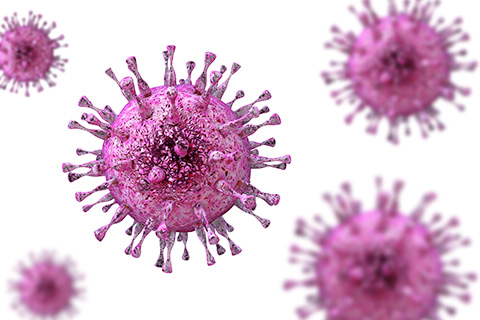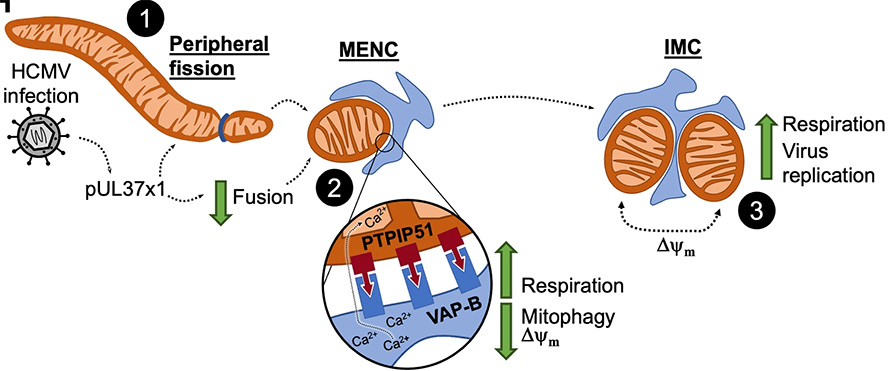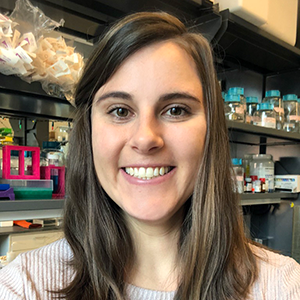How HCMV hijacks host cells — and beyond
Over 200 viruses infect humans, and all rely on living host cells to survive. In doing so, they induce striking changes to the cell and its environment. Scientists like Ileana Cristea are investigating these changes to better understand the complex virus–host relationship.

Cristea recently shared her research on the American Society for Biochemistry and Molecular Biology webinar Breakthroughs, a series highlighting research from ASBMB journals. A professor of molecular biology and director of graduate studies at Princeton University, she also serves as editor-in-chief of Molecular & Cellular Proteomics. During her talk, sponsored by MCP, Cristea discussed how viral infections reshape organelles and cellular metabolism and how these changes relate to broader disease biology.
One key intracellular change during viral infection, Cristea said, is organelle remodeling. Organelles — such as mitochondria, which drive energy production, and the endoplasmic reticulum, or ER, which synthesizes proteins and lipids — are often disrupted by viruses.
“Diverse viruses that infect so many different types of cells (and) have different replication strategies, different genomes, they're united by this need to induce organelle remodeling,” she said.

Cristea and colleagues observed that cells infected with human cytomegalovirus, or HCMV, a double-stranded DNA virus, exhibited mitochondrial fragmentation; but, in HCMV-infected cells, it surprisingly increased cellular respiration. The team turned to mass spectrometry-based proteomics and microscopy to investigate.
They discovered a novel organelle–organelle interaction: small mitochondrial fragments induced by HCMV infection became encased in ER pockets. They named these new structures mitochondria–ER encapsulations, or MENCs. Studies across various HCMV strains and cell types confirmed MENCs as a consistent feature of late-stage infection.
Additional work revealed that MENCs helped sustain high cellular respiration, ultimately benefiting the virus. Similar patterns of elevated metabolism despite mitochondrial fragmentation had been seen in other diseases.

“When we thought about this, we immediately thought about cancer, because HCMV is known to be also an oncomodulatory virus, and in cancer, we see mitochondrial fragmentation,” Cristea said.
In metastatic melanoma cells, the team observed the same phenomenon: fragmented mitochondria encapsulated in MENCs with high bioenergetic activity — and MENC formation correlated with greater cancer severity.
In addition to organelle remodeling, viral infection disrupts metabolism, notably increasing levels of the byproduct lactate. While lactate is known to dampen immunity in cancer, its role in viral infection was unclear.
In a recent study, Cristea’s team found that treating cells with lactate enhanced viral replication. Proteomics analysis of cells infected with HCMV, or the herpes simplex 1 virus, called HSV-1, showed lactate-modified host defense proteins. This lactylation, occurring in intrinsically disordered regions, inhibited immune signaling and promoted infection.
Cristea’s research also explores how viruses influence the space outside infected cells. Her team found that viruses can alter the surrounding microenvironment to promote infection. Using a fluorescence-based assay, they observed that infection in one cell disrupted cell division and weakened immune responses in neighboring cells. This priming helped HCMV, HSV-1 and influenza viruses spread more easily.
“We thought initially that (the neighboring cells should) be ready for defense because this cell is becoming infected, but actually they have dampened immunity,” she said.
While much of Cristea’s work has largely focused on viral infections, her lab is now exploring whether the same cellular mechanisms underlie other diseases, including cancer.
In case you missed it, here's the full Breakthroughs webinar.
Enjoy reading ASBMB Today?
Become a member to receive the print edition four times a year and the digital edition monthly.
Learn moreGet the latest from ASBMB Today
Enter your email address, and we’ll send you a weekly email with recent articles, interviews and more.
Latest in Science
Science highlights or most popular articles

Defining a ‘crucial gatekeeper’ of lipid metabolism
George Carman receives the Herbert Tabor Research Award at the ASBMB Annual Meeting, March 7–10, just outside of Washington, D.C.

The science of staying strong
Muscles power every movement, but they also tell the story of aging itself. Scientists are uncovering how strength fades, why some species resist it and what lifestyle and molecular clues could help preserve muscle health for life.

Bacteriophage protein could make queso fresco safer
Researchers characterized the structure and function of PlyP100, a bacteriophage protein that shows promise as a food-safe antimicrobial for preventing Listeria monocytogenes growth in fresh cheeses.

Building the blueprint to block HIV
Wesley Sundquist will present his work on the HIV capsid and revolutionary drug, Lenacapavir, at the ASBMB Annual Meeting, March 7–10, in Maryland.

Gut microbes hijack cancer pathway in high-fat diets
Researchers at the Feinstein Institutes for Medical Research found that a high-fat diet increases ammonia-producing bacteria in the gut microbiome of mice, which in turn disrupts TGF-β signaling and promotes colorectal cancer.

Mapping fentanyl’s cellular footprint
Using a new imaging method, researchers at State University of New York at Buffalo traced fentanyl’s effects inside brain immune cells, revealing how the drug alters lipid droplets, pointing to new paths for addiction diagnostics.

